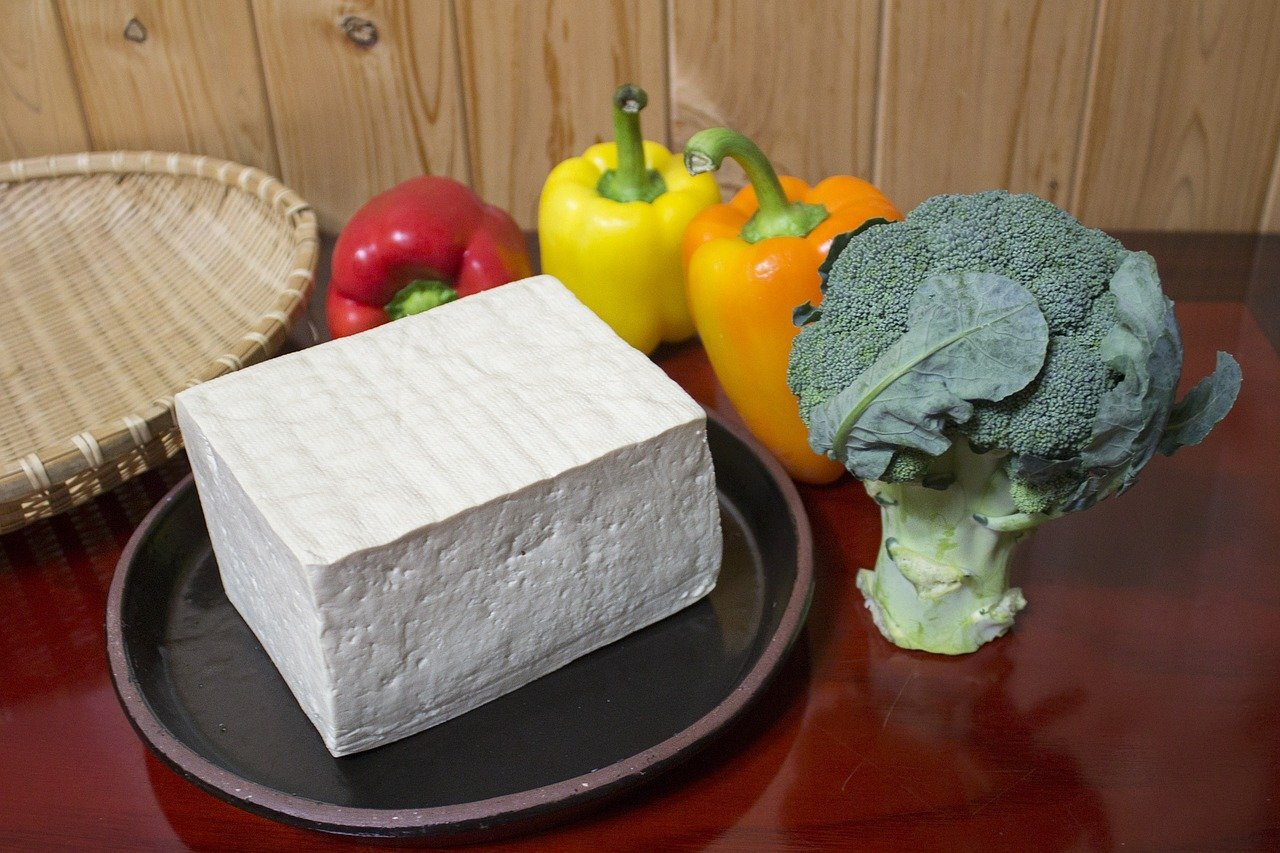A Guide to Tofu Types and What to Do With Them
Firm, extra firm, soft, silken - there’s a vast variety, but what’s the difference between them and how do you use tofu in cooking?
First of all let me explain what tofu is and where it comes from. Tofu comes from mature white soybeans which have been soaked and ground into a mixture that is warmed with water, and then strained to become soy milk. The milk is combine with a coagulant and then simmered until the curds and whey separate. Then the curds are placed into cloth-lined molds and it is pressed until more whey drains out. The amount of time it is pressed depends on the quantity of curds and the desired firmness, typically this is about 15-20 minutes. The longer it’s pressed, the more whey is released, and the firmer the end product will be.
Before we get into how to prepare different types of tofu, let’s first review the two different varieties. There’s SILKEN tofu and then there’s REGULAR tofu.
SILKEN
This un-drained, un-pressed tofu is a Japanese variety with a high water content with a texture that is custard-like. Silken tofu can have different consistencies depending on how much soy protein it contains. It is often labeled soft, firm, or extra firm. Silken tofu works well in creamy and blended foods like smoothies, desserts, puddings, salad dressings, sauces, and dips. It can also be used as an egg substitute in baking. Silken tofu comes in an aseptic container that doesn’t need to be refrigerated so this is nice to just keep on hand for when you want to whip up a creamy dish, so it’s great shelf-stable protein for camping.
BLOCK
Block tofu is what you most commonly find in grocery stores and restaurants. Block tofu comes in sealed water trays. It has a somewhat spongy consistency, and is available in several levels of firmness, depending on how much water has been pressed out during processing. Soft tofu has the least amount of water pressed out, while super-firm has a low moisture content and a dense texture.
Soft tofu: Soft tofu is the Chinese-style equivalent of silken tofu. It is slightly less smooth but can be used in the same way as silken tofu. Pressing soft tofu is not recommended, it is best drained and blotted. Soft tofu is great in sauces, dips, or as a substitute for cheese on a pizza by making tofu ricotta.
Medium tofu: This tofu is denser than silken and is soft, but still fairly delicate. It can work well in gently simmered soups like miso.
Firm tofu: Firm is the most versatile of all tofu and can be battered, crusted, baked, stir-fried, pan-fried, or glazed. It’s also great crumbled and used in tofu scramble or in tofu-egg salad sandwiches.
Extra-firm tofu: This tofu holds its shape well and is excellent for slicing, cubing, and in many types of dishes where you can saute, stir-fry, air fry, or bake it. Firm tofu can also be grilled, or crumbled and used like ground meat.
Super-Firm tofu: This tofu is very dense with a high protein content. It won’t fall apart on you and there is less water to cook out, so it can be a good choice when you’re in a hurry. However, it can also dry out more quickly if you’re baking or grilling with high heat so don’t overcook it.
FREEZING TOFU
You can change the texture of tofu to be even more grainy by freezing it. I like to freeze firm and extra-firm tofu. It’s best to drain the water from it first, slice or cube the block, and then freeze in an airtight container. Once thawed, you’ll have a more firm, chewy texture which I like when grilling seasoned tofu steaks.
TOFU PREPARATION
Here’s what you need to do to get your tofu ready for action. Because tofu has a high water content, it’s important to remove the excess liquid so you allow it to take on other flavors of the dish you’re preparing.
For eating raw: Soft and silken tofu are ready to eat right out of the package, though technically you can eat any tofu raw. I think these two varieties are great for making creamy salad dressings or smooth ricotta cheese to drizzle on pizza.
Drain off the excess water and eat.
For block tofu:
Pierce a small slit in the package and drain the water used for packing. Next, remove block from the package. Some people have fancy tofu presses, not me, I have paper towels, a cotton towel, and a cast iron pan.
Place the block on a clean absorbent surface like a paper towel square, then wrap it up like a gift. The paper towel will protect the tofu from absorbing any lint in our next step.
Next take your wrapped block and fold it up into a clean cotton towel. I use a dish drying towel that’s large enough to absorb all the water that will be being pressed out.
Place a heavy object on top of the block, I use a cast iron skillet. Let it sit for 10-15 minutes.



